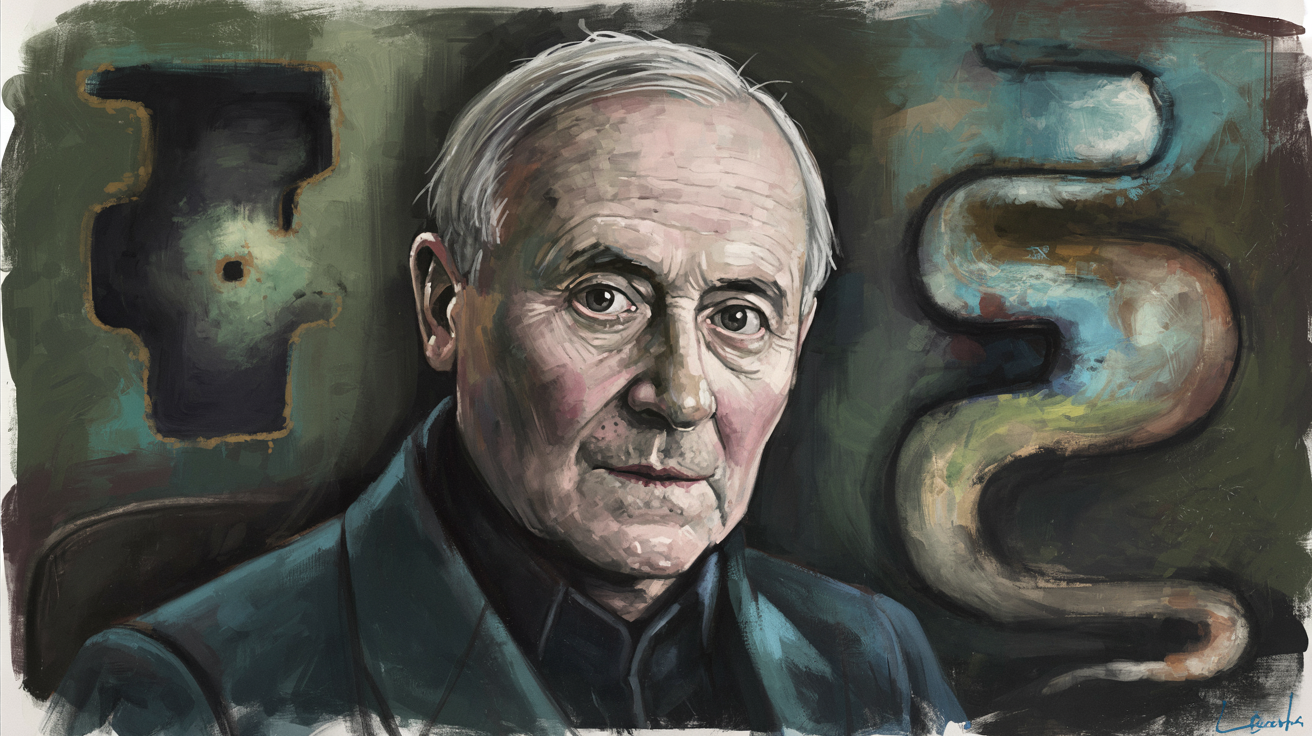Joan Miró , a multi-talented Catalan artist (painting, sculpture, engraving, ceramics), left his mark on art history as a pioneer of surrealism. His dreamlike universe, populated by biomorphic forms and mystical symbols, continues to fascinate with its balance between apparent simplicity and conceptual depth.
Artistic Awakening: From Barcelona to Paris.
Born in Barcelona in 1893, Miró was immersed in the vibrant Catalan culture from his youth. Vollard's Exhibition of French Art (1917) at the Palau de Bellas Artes in Barcelona was an aesthetic shock, leading him towards a break with realism. His early landscapes, such as The Farm (1921-1922), already demonstrate a radical stylization of forms.
Settled in Paris in the 1920s, Miró frequented the Surrealist avant-garde: André Masson , Antonin Artaud and Max Ernst became his artistic accomplices. His studio on rue Blomet was a laboratory for experimentation, where founding works such as the Dream Paintings (1925-1927) were born, merging abstraction and the subconscious.
A Revolutionary Aesthetic: Symbols and Innovation.
Miró's Visual Language.
-
Organic forms : Circles, spirals and stars evoke a poetic cosmos ( Constellations , 1940-1941).
-
Primary colors : Red, blue and yellow vibrate in pure flat tints, inspired by Catalan Romanesque art.
-
Mystical symbolism : The bird, the woman and the star become recurring archetypes.
Miró went beyond traditional painting in 1927 with his object-paintings , incorporating raw materials (string, sandpaper). His transdisciplinary collaborations (sets for Romeo and Juliet with Ernst, 1926) illustrate his refusal of artistic boundaries.
The Miró Legacy: The Fundació and Contemporary Art.
In 1975, Miró founded the Fundació Joan Miró in Barcelona, a temple dedicated to the preservation of his work and research into modern art. This place, designed by his friend Josep Lluís Sert, houses more than 14,000 pieces (paintings, sculptures, tapestries) and embodies his commitment to art education.
Where to See Miró's Works?
-
Fundació Joan Miró (Barcelona).
-
MoMA (New York): The Birth of the World (1925).
-
Centre Pompidou (Paris): Bleu II (1961).
Frequently Asked Questions about Joan Miró:
Q: Why is Miró associated with surrealism?
A: Although not an official member of the group, he shared their exploration of the unconscious. His works, such as Le Carnaval d'Arlequin (1924-1925), embody the "automatic" spirit dear to Breton.
Q: How can you recognize Miró's style?
A: His compositions play on simplified forms , fluid lines and a vivid palette , creating a balance between chaos and harmony.
Q: How important is ceramics in his work?
A: Collaborating with Josep Llorens Artigas from 1944, Miró reinvented this traditional craft (e.g. Mur de la Lune at UNESCO, Paris).
In Summary : Joan Miró created an unclassifiable body of work, blending the infancy of art with symbolic sophistication . His influence persists among contemporary artists, making him a bridge between modernity and poetic universality.
Joan Miró (1893-1983)

